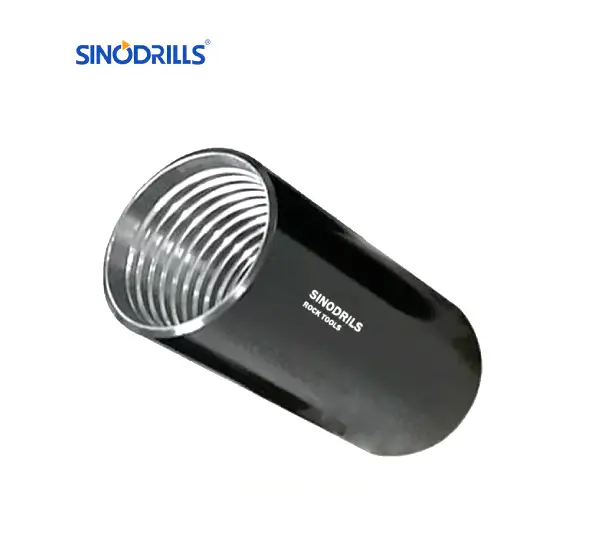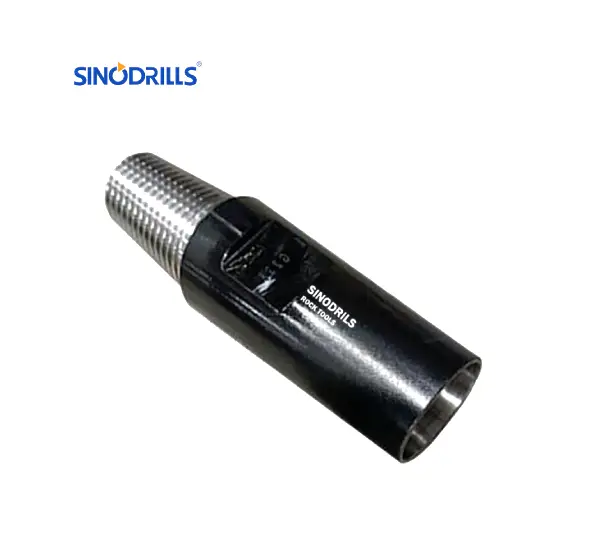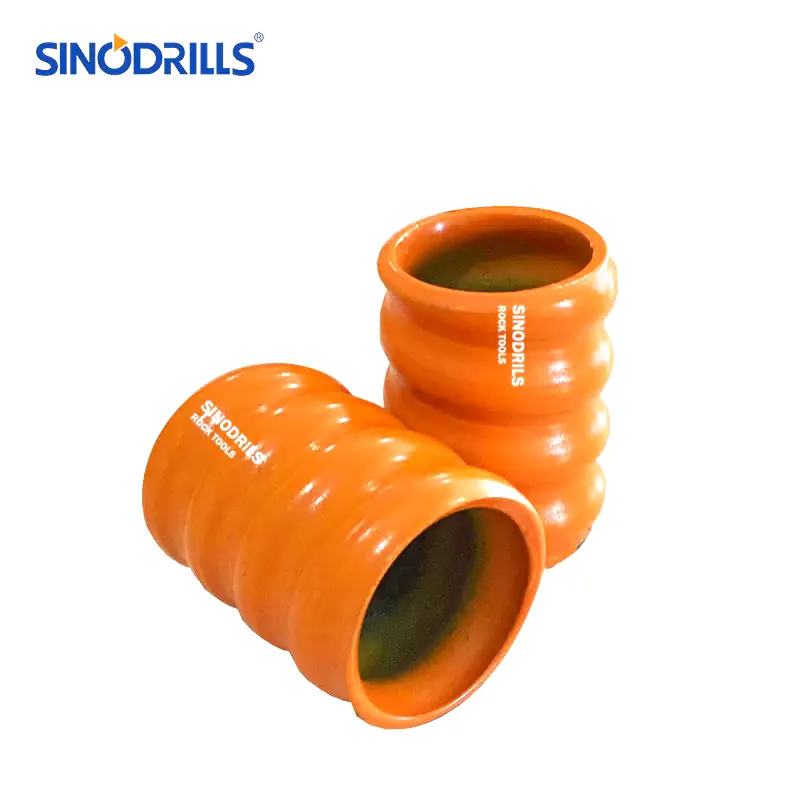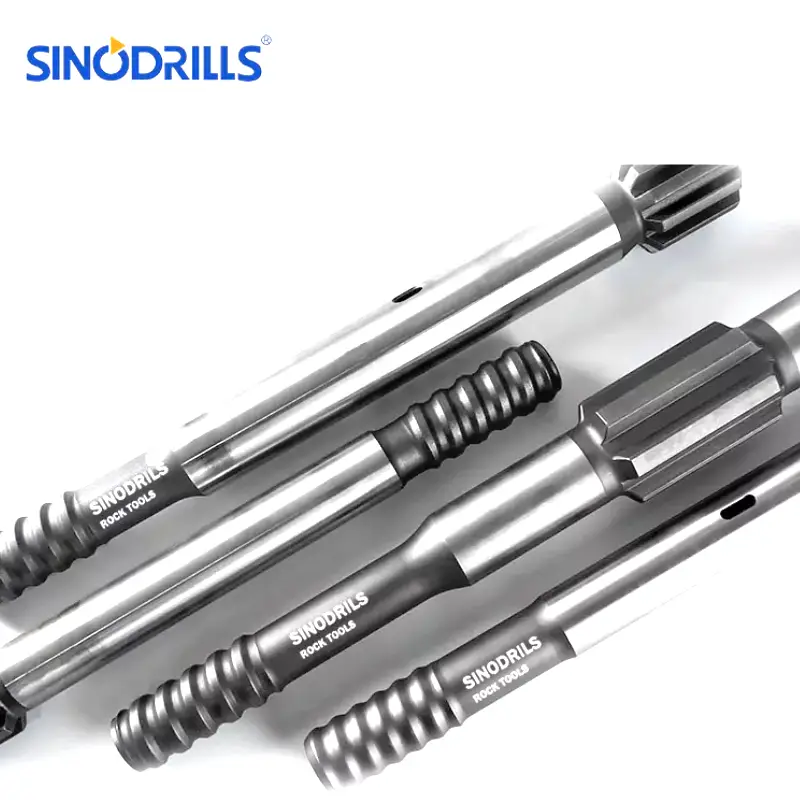The shank adapter is a critical, yet often overlooked, component in any rock drilling operation. It acts as the vital link between the drill’s powerful hammer and the drill string, transferring immense impact energy. Understanding the factors that influence its lifespan is key to maximizing efficiency and minimizing downtime on the job site.
A failing shank adapter can lead to a cascade of problems, including reduced drilling speed, premature wear on other components, and even drill string failure. This blog post will delve into the typical lifespan of a rock drill shank adapter, exploring the signs of wear, best practices for maintenance, and how to get the most out of this essential part.
What are Rock Drill Shank Adapters?
Recommended Rock Shank Adapters
A rock drill shank adapter is a vital component in top-hammer drilling, acting as the crucial link between the drill’s powerful hammer and the drill string. Its primary function is to efficiently transmit the high-frequency impact energy and rotational torque from the drill’s piston to the drill rod and, ultimately, to the drill bit.
Made from high-strength alloy steel and often featuring a surface-strengthening heat treatment, the shank adapter is designed to withstand immense complex loads. It ensures a secure and precise connection, minimizing energy loss and preventing premature wear on other drilling components, making it essential for maximizing drilling efficiency and safety in mining, tunneling, and construction applications.
How Long Does a Rock Drill Shank Adapter Last?
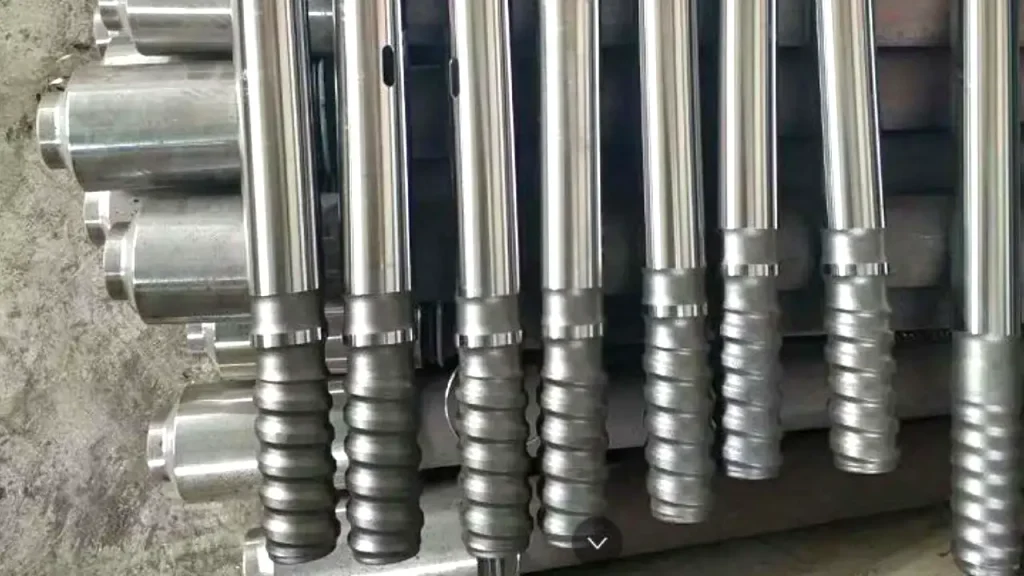
The lifespan of a rock drill shank adapter is not a fixed metric but rather a dynamic variable influenced by numerous factors. On average, a quality shank adapter might last through several hundred hours of drilling, but this can be drastically shortened or extended depending on the specific working conditions and maintenance practices.
The material composition of the rock being drilled is a significant factor; highly abrasive rock, like granite with a high quartz content, will cause significantly more wear and tear than softer rock formations. Additionally, the operational parameters, such as the feed force, rotation speed, and the drifter’s impact power, all play a role in the adapter’s longevity.
Beyond the drilling environment, the operator’s practices and the overall condition of the drilling rig are crucial to the adapter’s lifespan. Misalignment of the drill feed, excessive rattling, and improper lubrication can lead to premature failure.
Regular and thorough inspection for signs of wear, such as cracks, thread damage, and spline wear, is essential. Timely replacement of worn components and adherence to the manufacturer’s recommended maintenance schedule are key to preventing a catastrophic failure that could damage the more expensive drill components, ultimately maximizing the life of the entire drill string.
What Factors Affect the Rock Drill Shank Adapter Lifespan?
Several critical factors influence how long a rock drill shank adapter will last. Understanding these variables is key to maximizing efficiency and reducing operational costs. The lifespan is directly tied to the following conditions:
- Drilling Conditions: The type of rock being drilled is a primary factor. Abrasive, hard rock, like granite, causes more rapid wear on the adapter’s splines and threads compared to drilling in softer sedimentary formations, drastically shortening its life.
- Operating Parameters: The driller’s settings are critical. An imbalance in feed force, rotation speed, or impact pressure puts excessive stress on the adapter, leading to metal fatigue and premature failure. Proper settings are essential for longevity.
- Maintenance & Lubrication: Regular inspection for cracks, thread wear, and other damage is vital. Consistent and proper lubrication of both the internal splines and the connection threads prevents seizing and reduces friction, significantly extending the adapter’s operational life.
- Operator Skill: A skilled operator ensures correct alignment between the drill and the rock face, avoiding bending stress. They also manage feed pressure to prevent excessive rattling and vibration, which are major contributors to early adapter failure.
- Drill Equipment Condition: The overall health of the drilling rig matters. Worn-out drifter components, such as pistons, couplings, and bushings, can lead to increased vibration and inefficient energy transfer, putting extra strain on the shank adapter and shortening its lifespan.
How to Extend Rock Shank Adapter Life?
There are several ways to prolong the life of your rock drill shank adapter, ensuring you get the most out of your investment and maintain drilling efficiency. By focusing on preventative measures and best practices, you can significantly reduce wear and tear.
- Regular Maintenance and Lubrication: Consistent cleaning and proper lubrication are paramount. Debris and dust can cause friction, so clean the adapter after each use. Applying the correct type of lubricant reduces friction and prevents corrosion, which are major causes of premature failure.
- Proper Storage and Handling: When not in use, store shank adapters in a dry, cool environment to protect them from moisture and extreme temperatures that can degrade the material. Proper handling, avoiding dropping or rough treatment, prevents physical damage that could compromise its integrity.
- Routine Inspections: Regularly inspect the adapter for any signs of wear, such as cracks, deformed splines, or thread damage. Catching these issues early allows for timely replacement, preventing a small problem from escalating into a catastrophic failure that could damage the more expensive drilling components.
- Optimizing Drilling Parameters: Adjusting the feed force, rotation speed, and impact pressure to match the rock hardness is crucial. Using settings that are too aggressive for the material can overstress the adapter, while settings that are too low can lead to excessive rattling, both of which shorten its life.
- Using High-Quality Adapters: The quality of the shank adapter itself is a major factor. Choosing adapters made from high-grade alloy steel with proper heat treatment and precision manufacturing ensures they are built to withstand the rigorous demands of drilling. High-quality adapters offer better durability and a longer service life.
Conclusion
Ultimately, the lifespan of a rock drill shank adapter is not a fixed number but rather a variable influenced by a combination of factors. By paying close attention to signs of wear, implementing a rigorous maintenance schedule, and ensuring proper operating conditions, you can significantly extend the life of your adapters and improve overall drilling performance.
Regular inspection and timely replacement are crucial to prevent costly damage to your rock drill and other components. Investing in high-quality shank adapters from a reputable supplier will also pay dividends in the long run, offering superior durability and a more reliable transfer of impact energy.
For all your drilling needs, consider our top-quality rock drill shank adapters at Sinodrills. We offer a wide range of adapters for various drill models, manufactured with precision and high-grade materials to ensure maximum durability and performance. Contact us today to learn more about our wholesale options and competitive pricing.

